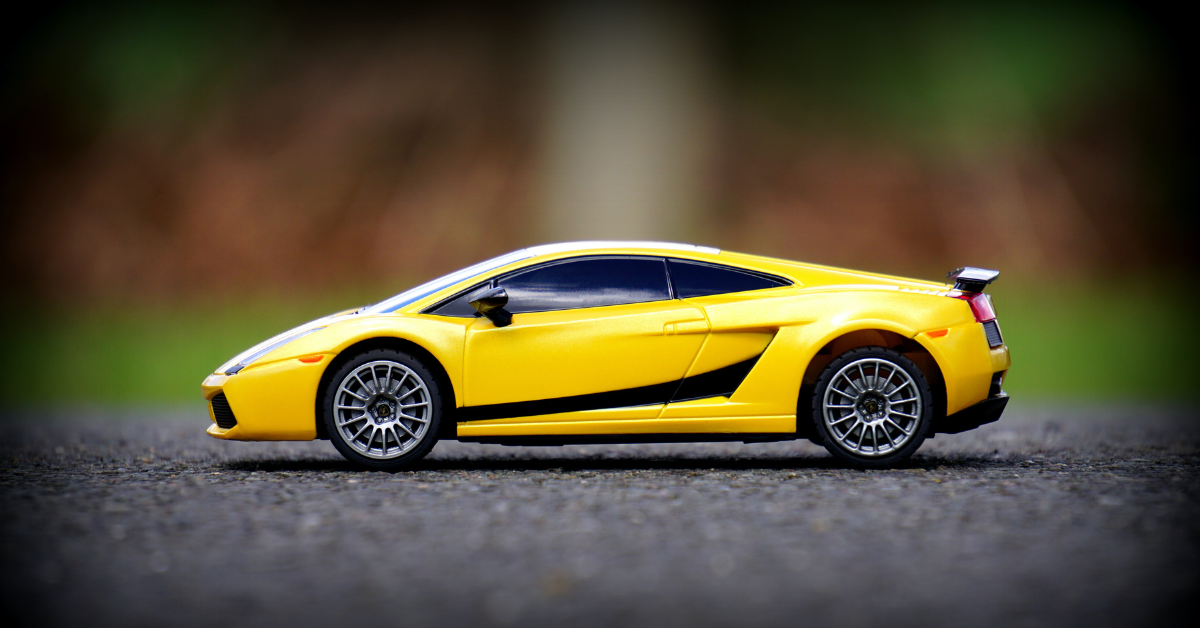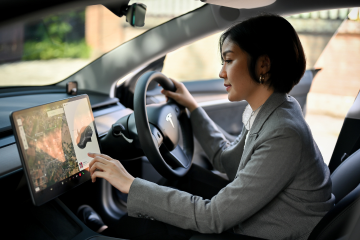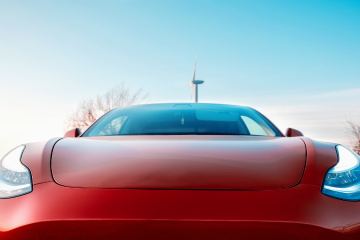Can You Be Neutral on Tesla ? Phenomenon of Love or Loathe

Can You Be Neutral on Tesla? Examining the Polarizing Phenomenon of Love or Loathe| Why Most People Hate Tesla ?
Main Reasons People Hate Tesla
Tesla is one of the most polarizing automotive brands, inspiring both die-hard fans as well as fierce critics. While Tesla vehicles are undoubtedly impressive technical achievements that have accelerated the adoption of electric vehicles (EVs), they also come with significant downsides that anger many drivers.
Why Most People Hate Tesla ?
Exorbitantly High Prices
As mentioned in the introduction, the number one reason potential customers avoid purchasing Tesla vehicles is their consistently exorbitant pricing across the model range. While Elon Musk has long promised more affordable, mass market Tesla's, even the lowest cost options remain firmly in luxury vehicle territory out of reach for average consumers.
Specifically, the Tesla Model S sedan and Model X SUV both start at over $100,000 for just the base configuration. The Long Range Model S begins at $104,990 USD while the performance oriented Plaid version costs $137,990 before adding any upgrades or options. Meanwhile the 7-seat Model X SUV sees a current base price of $120,990.
Clearly, these pricing levels target wealthy luxury buyers who can afford six-figure vehicle purchases. And that immediately alienates a huge portion of drivers priced out from even considering Tesla's flagship models.
As Musk once tweeted, "We designed Tesla Model 3 to be affordable enough to compare to a Camry or Accord so more people could afford it." But in reality, even the lower cost Model 3 sedan and Model Y crossover start at pricing equivalent to entry level luxury vehicles from German brands.
The Model 3 now starts at $46,990 for the cheapest, almost stripper rear-wheel drive version. The dual motor all-wheel drive Long Range model jumps up to $57,990 in base form. As for the Model Y small crossover built on the Model 3 platform, its base Long Range version is now $65,990 before extras.
While significantly below the S and X models, these entry points between $47,000 to $66,000 still put them out of reach as true "mass market" vehicles. Instead, they compete against compact luxury segment players like the Audi A4, BMW 3-Series, Mercedes C-Class, Lexus IS, and Genesis G70 which all hover around $40,000 to start.
Notoriously Poor Build Quality

Can You Be Neutral on Tesla
Once you do shell out anywhere from $50,000 to over $100,000 on a new Tesla, excited owners unfortunately often discover shoddily built vehicles that fail to reflect their premium price tags.
Since the early days when low volume production of the original Roadster and Model S began, Tesla has struggled with consistency and quality control compared to established luxury automakers. And over a decade later, build quality and reliability remains a sore point dragging down owner satisfaction and brand reputation.
Common issues reported across Tesla's current lineup highlight what feels like a lack of basic manufacturing care and attention to detail. These range from large, uneven panel gaps visible on the bodywork to poorly aligned trim and mismatched paint tones. Opening and closing doors, the hood or trunk often showcase uneven shut lines well outside industry norms.
Inside, the situation fails to improve unfortunately. Since Tesla utilizes so many touchscreens and gloss black surfaces, every fingerprint and imperfection gets noticed. Owners routinely complain about clear dust and residue trapped under screens or glue leaking at seams that wouldn't fly for rival Audi, BMW, or Mercedes models. Materials sometimes mimic cheaper economy car interiors despite premium price tags.
Mechanically, a continuous litany of random rattles, squeaks, and noises inside the cabin erode the feeling of durability. New Tesla owners vent their frustrations online after hearing buzzing, rattling AC vents or ill-fitting consoles literally weeks after purchase. Door handles have earned notoriety for suddenly failing or feeling on the verge of breaking. Clearly fit, finish, and longevity suffers versus German and Japanese rivals.
Tesla's inability to match well-built cabins, precision assembly and rigorous quality assurance protocols seen at established premium automakers leaves many buyers feeling short-changed and angry considering the prices paid. It's hard to justify cheap looking panels, uneven panel alignment, and rapid interior deterioration as "normal" in a $90,000 Model X that debuted in 2015. But new owners constantly face these disappointing realities.
Tesla’s Autopilot Problem Causing Crashes
Transitioning to some very serious downsides of Tesla ownership, another top complaint centers around safety issues with their controversial Autopilot advanced driver assistance system (ADAS) and its undelivered full self-driving promises.
Tesla and CEO Elon Musk have drawn intense scrutiny and criticism for overpromising Autopilot and Full Self Driving (FSD) capabilities that imply true autonomous vehicle functionality when that has yet to be achieved. Both the names Autopilot and FSD, flashy visualizations showing full autonomous operation during a PowerPoint presentation, and Musk's tweets exaggerating abilities all set unrealistic expectations among customers.
This gap between actual ADAS features that simply provide basic adaptive cruise control, lane centering assistance, and automated emergency braking versus suggested full self-driving ready autonomy angers many buyers. It has also led to deadly crashes when drivers put too much faith in Autopilot's limited capabilities.
For example, a tragic accident in Texas saw two men killed after their Tesla Model S crashed into a tree at high speed while neither were in the driver seat. Accident reports indicate the owner was sitting in the passenger side with the car on Autopilot while his friend sat unbuckled in the back. Likely relying too heavily on Tesla's promises of self-driving tech instead of supervising like required, the vehicle veered off the road killing both riders.
Many critics called this crash Tesla's "Autopilot Problem" - overpromising leading consumers into believing full autonomous function exists today. When instead the unclear system boundaries, limitations, and need for constant human monitoring during any ADAS activation has led countless users into placing too much trust. Other fatal crashes have also involved distracted drivers failing to pay attention as directed while Autopilot ran.
Tesla must shoulder blame for using ambiguous terminology, allowing inattentive use of driver aids, and making Full Self Driving capability seem further along than reality. That dangerous combination erodes public trust in Tesla safety promises.
Limited, Inconsistent Customer Service

Can You Be Neutral on Tesla
Shifting gears to our next major grievance owners have against Tesla, another sore spot involves poor customer service support after you've purchased a vehicle.
Considering the premium prices paid for Models S, 3, X, and Y, customers expect a high level of responsive service when issues inevitably come up. Yet Tesla has become notorious for extended wait times reaching representatives, delays lasting weeks for parts and repairs, and lackluster communication from its mobile service fleet and physical service centers.
For example, many owners complain of extremely long hold times calling Tesla support numbers - averaging over an hour on hold just praying to eventually reach someone. Email communication receives limited responses with no direct access to service advisors or managers like luxury brand rivals often provide.
Appointment lead times also drag out much longer than expected - with some repair visits scheduled 3-6 weeks out even for seemingly minor issues. Korean YouTube vlogger Mr. Kim reported waiting over 40 days just for diagnosis and repair scheduling on his new Model 3 with a broken rear taillight and sensors. Unacceptable for a 2 month old $60k vehicle yet typical of Tesla customer service headaches.
Parts delays also reflect poorly on Tesla's attention to owners once vehicles sell. Sourcing replacement components like new touchscreens, advanced computer modules, sensors, and body panels often means multi-week waits leaving cars sitting in service centers or drivers without transportation. Rental cars and loaners also remain very difficult to access unlike at luxury dealers.
Tesla's customer service troubles leave many feeling stranded, abandoned, and second-class after their initial quality and reliability issues surface. For a young company with its survival dependent on return sales and word of mouth buzz, such poor post-purchase support fails to satisfy.
Expensive Battery Replacements
Drilling deeper into some of the functional problems that turn Tesla owners against the brand, let's examine issues around battery pack replacements.
As the most expensive component in an electric vehicle, the lithium ion battery pack plays an essential role in providing acceptable range to make EVs practical transportation. But the downside remains that replacement costs down the road once packs degrade can be astronomical.
Tesla generally provides an 8 year, 100,000 to 150,000 mile warranty on their battery packs depending on model. However, once that coverage expires, swapped packs range from $16,000 to over $20,000 - basically the value of many economy cars alone.
Examples online showcase Model S and X owners hit with $20,000-plus invoices after the batteries in their aging vehicles lose increasing chunks of the original rated capacity. Since capacities dropping to 70% or below can leave previously functional commuter cars suddenly useless for daily driving duties, owners find themselves hostage to painfully expensive fixes.
But even before that 8 year mark, some Tesla vehicles have exhibited premature issues suggestive of flaws in initial manufacturing or thermal management. YouTuber Rich Rebuilds demonstrated a 2014 Model S battery pack needing complete replacement despite just 70,000 miles - well short of expected longevity. In cases like that, drivers are on their own past the 4 year, 50,000 mile coverage period.
Considering EVs depend fundamentally on properly functioning batteries, their high degradation and failure rates along with extremely costly replacements definitely help explain some of the growing discontent with Tesla ownership. Adding in long delays to source hard-to-get packs leaves many disgruntled drivers vowing to never return.
Fast Wearing Tires
Moving onto another area that burns Tesla owners - accelerated tire wear issues. This stems from a combination of factors that see expensive rubber getting rapidly eaten away.
First, the instant torque delivered by electric motors puts far greater strain on tires during acceleration compared to gentle gas engines. All that instant rotational force when stomping the accelerator from 0 to 60 mph in under 3 seconds in some Performance models means more slippage and wear.
Second, the heavyweight batteries packed along the floor plans of Tesla's S, 3, X and Y also take a toll versus lighter gas-powered rivals. Heavier curb weights increase mechanical grip needed to maintain control.
Finally, poor wheel alignment setups from the factory and uneven tire wear point to a lack of precision. Many owners share photos online of bald patches indicating alignment problems causing tires to scrub and wear unevenly. Requiring fresh rubber less than 15,000 miles into ownership frustrates buyers who expect 50,000+ mile durability as the norm.
While Tesla does warn about increased tire wear in its owner’s manuals, the magnitude of real world differences still catch drivers off guard. Needing $1500+ tire changes yearly despite careful driving leaves many hopping mad - especially when dealers quote another 6+ weeks for appointments due to backup.
Performance Issues in Cold Weather
Shifting to some of the functionality limitations that anger Tesla owners, especially those in colder northern climates, we arrive at reduced performance in frigid temperatures. This stems from innate battery chemistry constraints.
Essentially, the lithium ion cells used in Tesla battery packs suffer noticeable loss of both stored energy capacity and power delivery under cold conditions. Owners report as much as a 30-40% range hit trying to drive in freezing winter temps or blizzards.
For example, a Long Range Model 3 rated at 358 miles by the EPA may struggle to even hit 200 real world miles in bitter cold or snow. The cells literally can’t discharge as much of their capacity due to higher interior electrical resistance when chilled. Acceleration also falls off as battery output power diminishes. This can be not just inconvenient but potentially dangerous trying to merge and navigate highways.
Meanwhile rival electric vehicles using different cell chemistry formulations like the Porsche Taycan suffer less severe cold weather drawbacks. But Tesla’s choices clearly degrade dramatically for drivers in Alaska, Canada, Scandinavia or anywhere frigid winter weather appears. Batteries meant for temperate California just don’t stack up in extreme snow or sub zero scenarios.
That’s a huge problem now limiting adoption and satisfaction across huge swaths of global markets. So Tesla still hasn’t fully matched the refueling convenience or all-season versatility of gasoline counterparts after nearly 20 years trying. No wonder many cold weather owners feel let down.
Forced Software Updates
Transitioning to some technology grievances now, a divisive aspect of Tesla ownership includes the forced software update model. Unlike rival vehicles, owners lack control over if or when updates get pushed to their cars.
As a company founded in Silicon Valley with deep software engineering roots, Tesla pioneered wireless over-the-air (OTA) vehicle firmware upgrades transmitted online. This allows enhancing features and performance without physical service visits. However, the downside centers around owners being unable to opt-out from updates less interested consumers may want nothing to do with.
For example, when Tesla introduced its controversial “Full Self-Driving” reboot requiring $15,000 upfront for beta test access, all vehicles received associated firmware changes overnight. This enraged drivers uninterested in that pricey add-on who suddenly faced different vehicle controls and nags to activate because Tesla pushed updates without asking first.
Other large revisions have introduced bugs from incompletely vetted code, leading to issues like locked touchscreens, broken HVAC controls, loss of range, and sudden system crashes. And once pushed remotely, only Tesla technicians can rollback firmware downgrades. So owners face hands tied plus long service delays waiting for fixes. No option exists for easily rejecting problematic releases like other cars receive through dealers before user install.
Essentially, the forced software updates leave Tesla drivers powerless against changes they may deeply dislike, distrust or want no part of. Yet lacking rollback capabilities or approval authority over altering their $50k+ vehicle’s functions introduces understandable frustration at the brand. Many owners just want to drive without dealing with Tesla remolding their car overnight.
Elon Musk Controversies and Personality Cult Backlash
Shifting gears from purely functional concerns to interpersonal sources of animosity, Tesla and CEO Elon Musk himself drive strong negative reactions from some based on controversial actions taken.
While a charismatic visionary engineer responsible for advancing electric vehicle adoption further than anyone imagined, Musk himself remains a divisive public figure. His erratic behavior and communication style rub many the wrong way.
For example, Musk ignited public outrage and prompted an SEC investigation in 2018 after falsely claiming funding was “secured” to take Tesla private at $420 per share. That brazen tweet alongside berating Wall Street analysts for asking “boneheaded questions” fuel perceptions of instability and arrogance.
Additionally concerning lawsuits for suddenly branding a rescue diver helping save children trapped in a Thailand cave a “pedo guy” without evidence demonstrate vindictiveness. Reports of extreme working conditions and high executive turnover inside Tesla also suggest challenges managing staff using empathy.
Musk also draws skepticism for repeatedly touting technological achievements years ahead of validated timelines to bolster stock excitement. Be it rocket landing promises, Full Self Driving by 2020, complete autonomy ready very soon, robot taxis shuttling passengers and other futures that fail to materialize damage his credibility. Where does endemic overpromising end and misleading exaggeration begin?
Elon Musk's behavior directly worsens brand sentiment among certain demographics already clashing against his politically left environmentalism. For conservatives, logic driven buyers and skeptics of his braggadocio style, Tesla gets lumped in with dislike of its bombastic CEO.
Cryptocurrency Drama
Further examining some of the self-inflicted public relations headaches Tesla has weathered recently, an episode triggering particular anger centered around Bitcoin and cryptocurrency engagement.
Back in March 2021, Tesla excited investors by announcing purchases of $1.5 billion in Bitcoin alongside plans to accept it as payment for vehicles. The move boosted the soaring crypto asset to new highs with Tesla's stamp of approval. However, just two months later, Elon Musk abruptly reversed course claiming environmental impact concerns over Bitcoin's intensive energy overhead.
This extreme flip flop left supporters high and dry, damaging trust in the brand from crypto owners. Dashing the hopes of using Bitcoin to buy a Model 3 angered advocates who had taken Elon's embrace at face value.
https://bit.ly/3wlf1Fy

Comments
Post a Comment